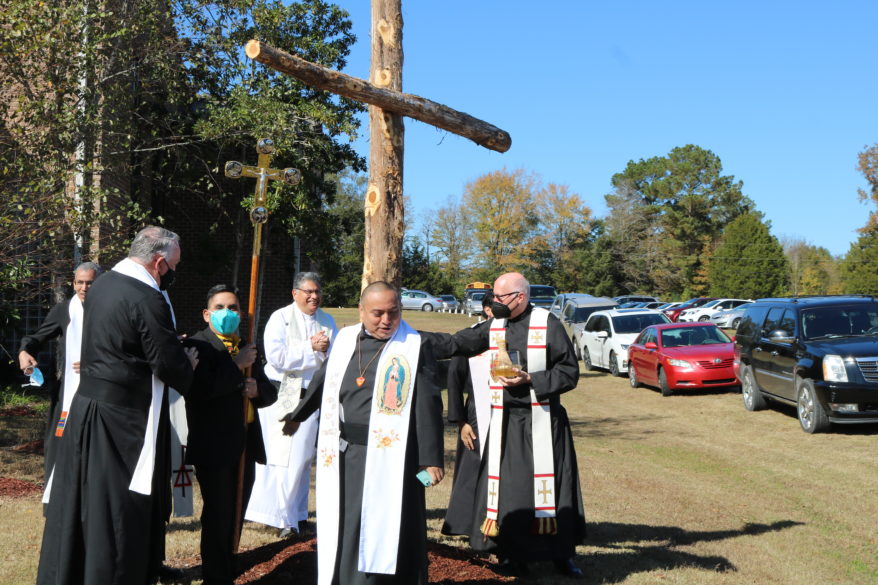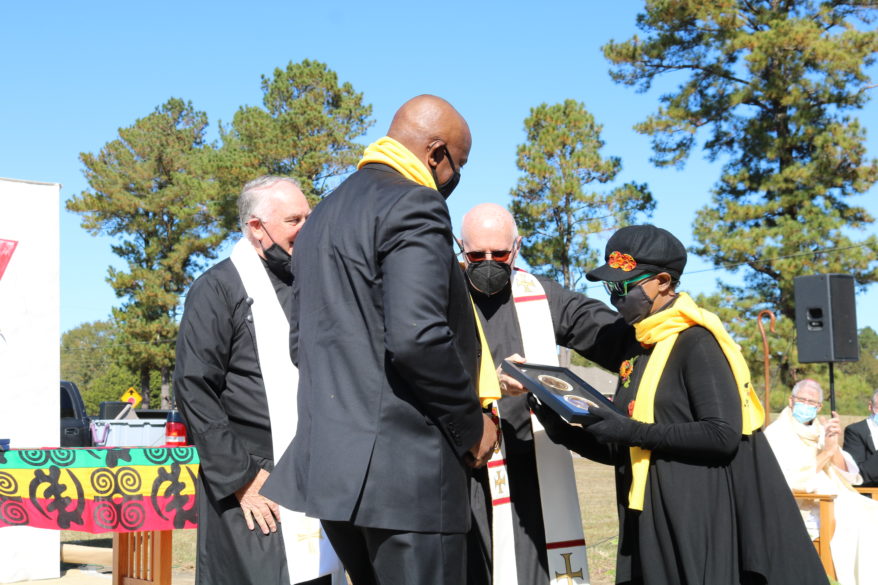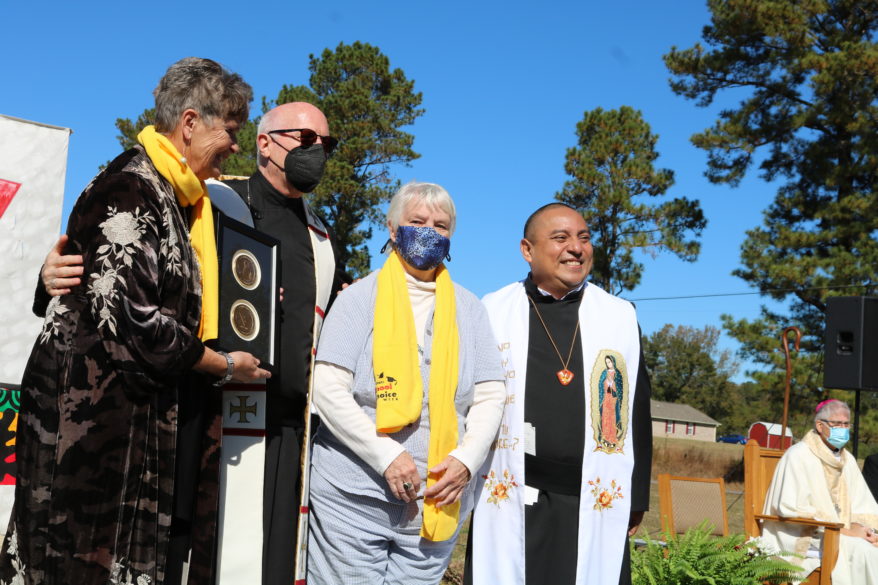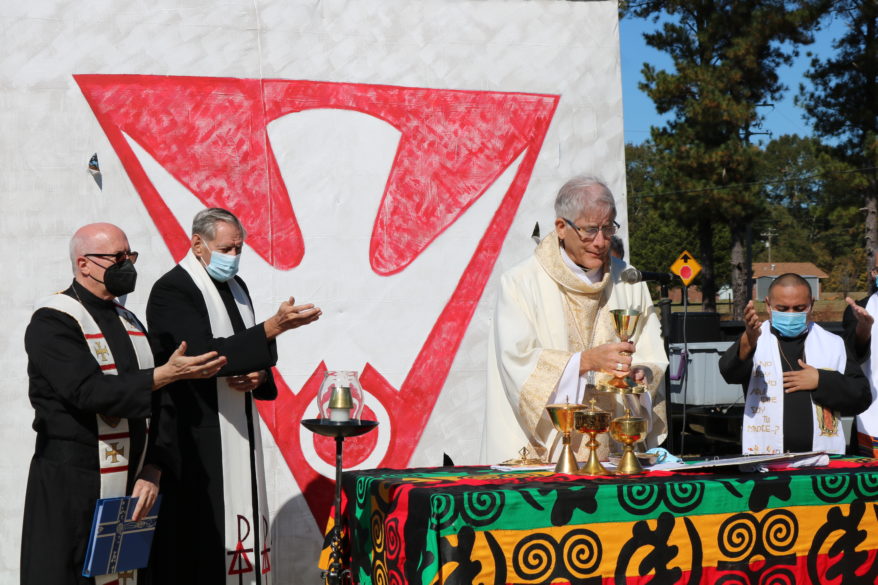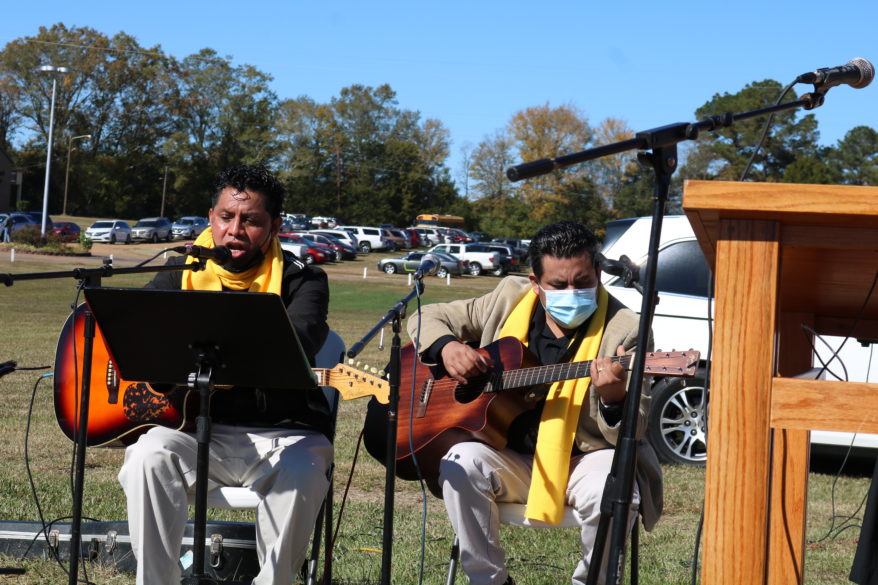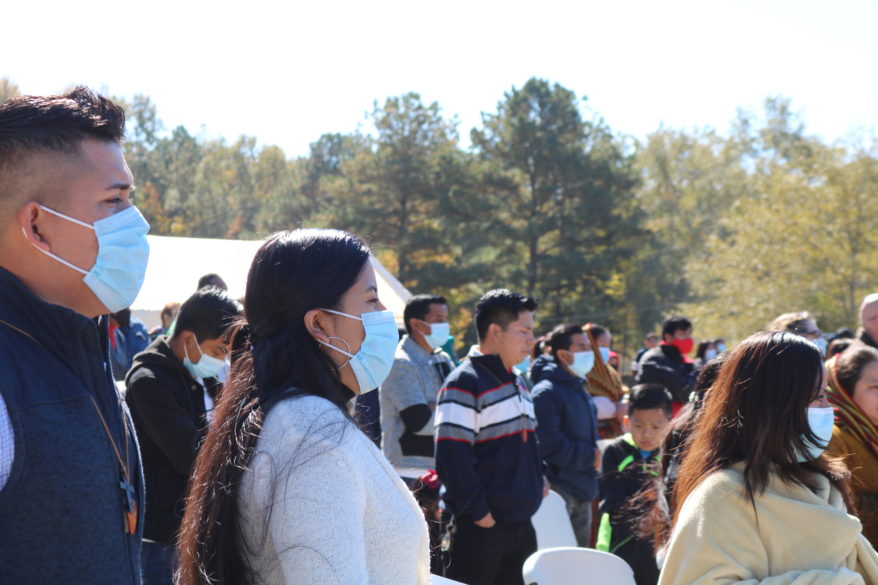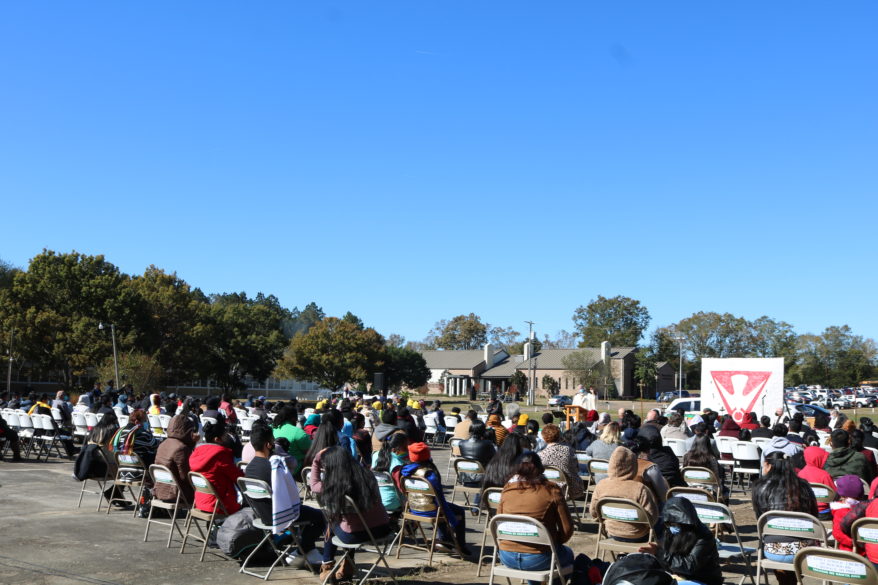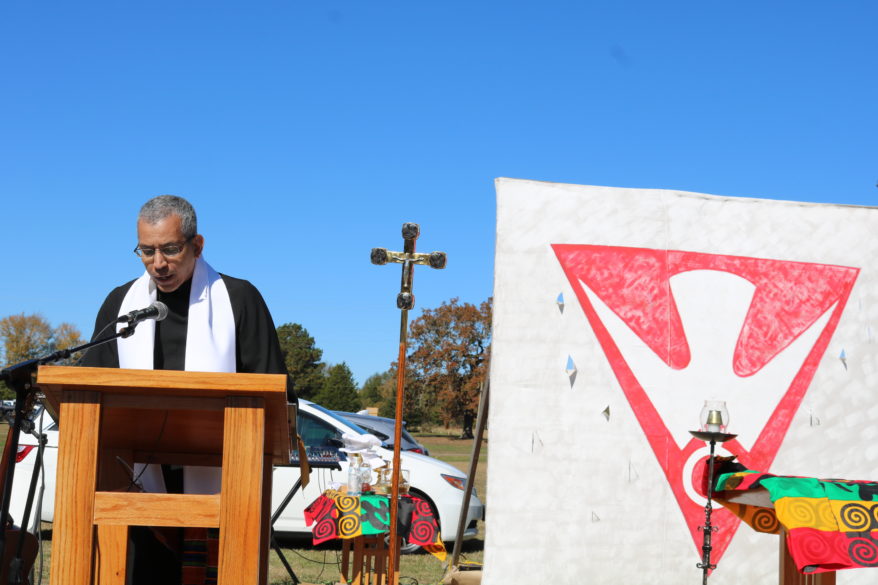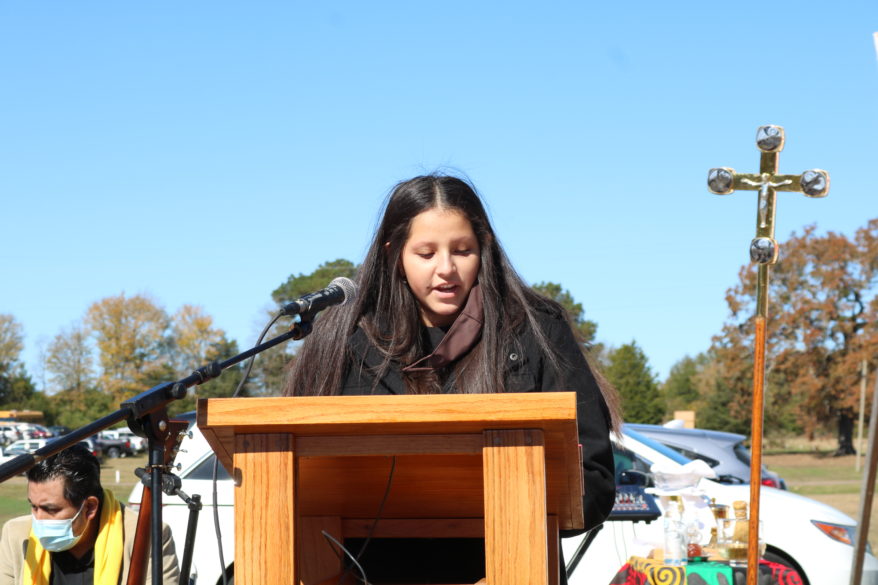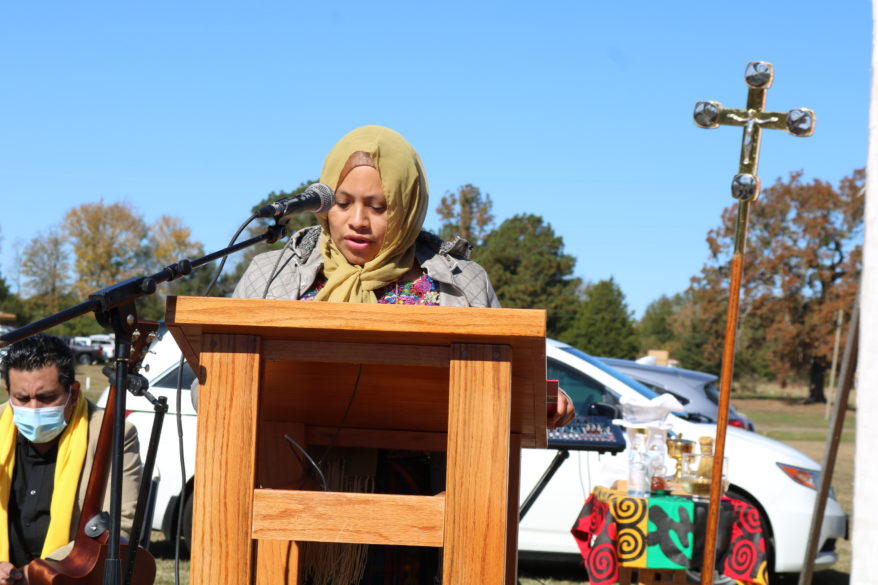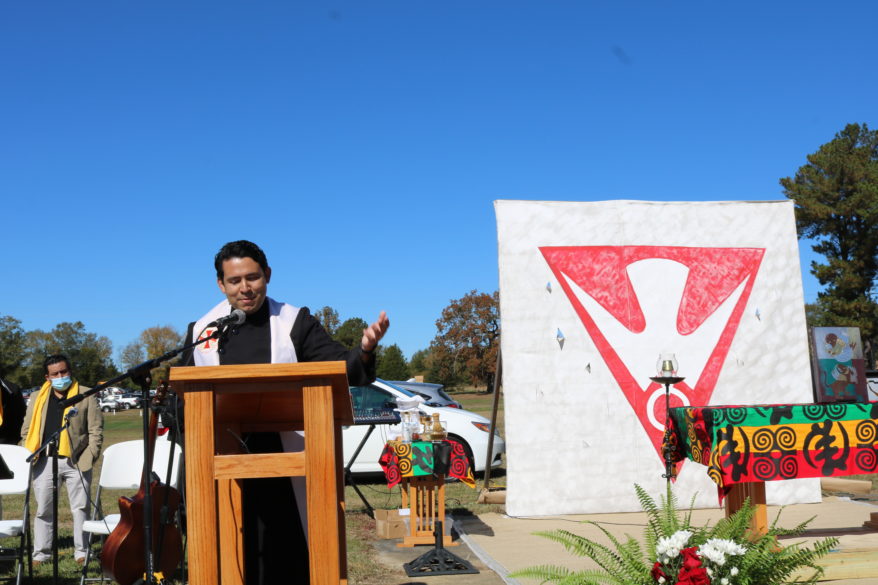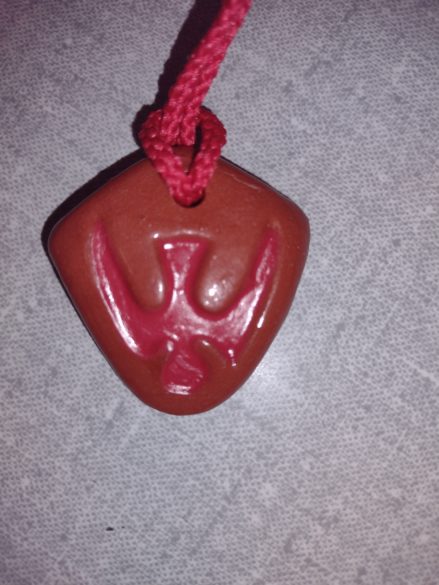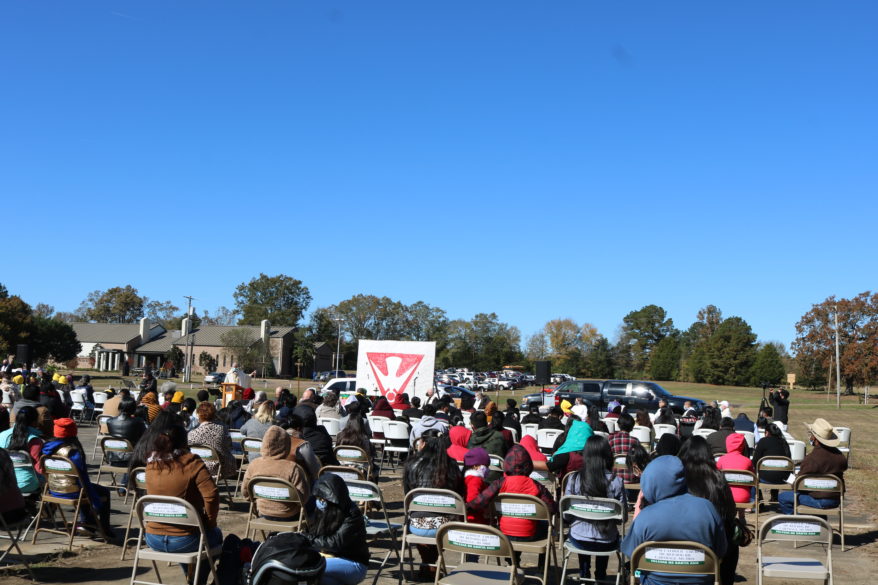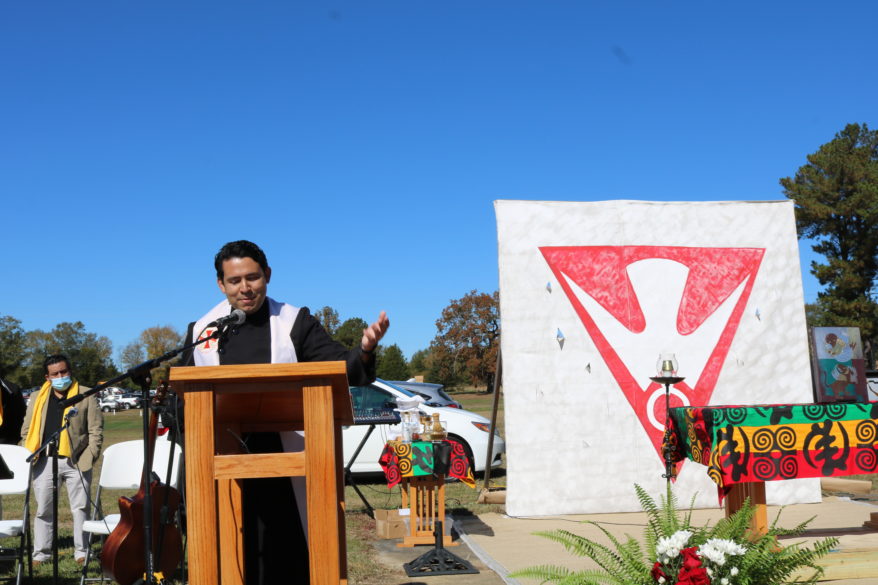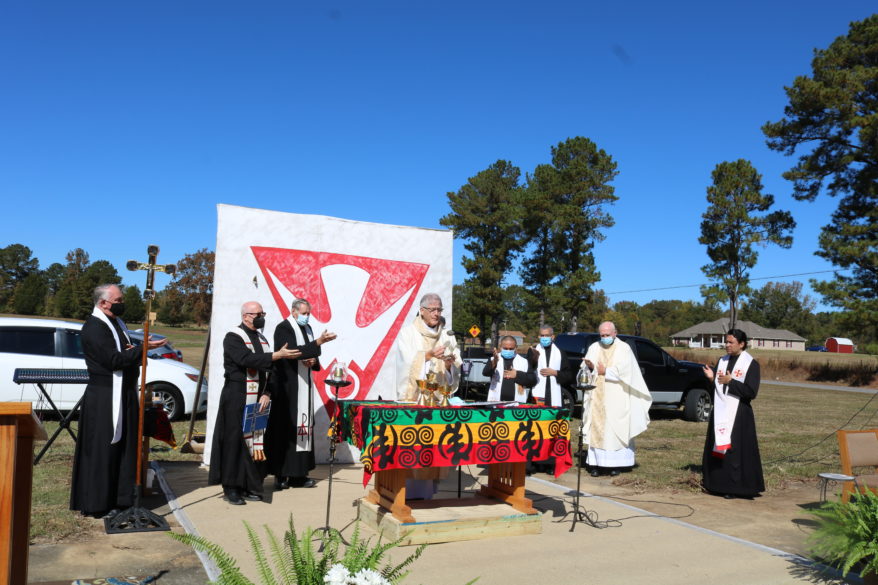By Berta Mexidor
CAMDEN – “There is no truer proof of a great love of God than a great love of our neighbor.” Father Thomas Judge, Founder of Trinity Missions
Hundreds of parishioners from four parishes gathered at Sacred Heart Camden to celebrate 100 years of Trinitarian Missions with a Mass celebrated by Bishop Joseph Kopacz and concelebrated by the Trinitarian priests, Fathers Mike Barth, general custodian of Trinity Missions, Odel Medina, Guy Wilson, Gustavo Amell, Raul Ventura, Alexis Zuniga Velasquez, Robert “Bob” Goodyear; in addition to Father Mike O’Brien of Sacred Heart Canton.
Bishop Kopacz recognized the Trinitarian’s servants’ deeds serving four Bishops before him, Bishops Gerow, Brunini, Houck and Latino, and thousands of Catholic Mississippians for more than 77 years. “We have the spirit of awe, for all what God has done for us … The Holy Spirit is flying above this assembly … because we are children of God. We have a spirit of hope and gratitude,” Bishop Kopacz said in his homily.
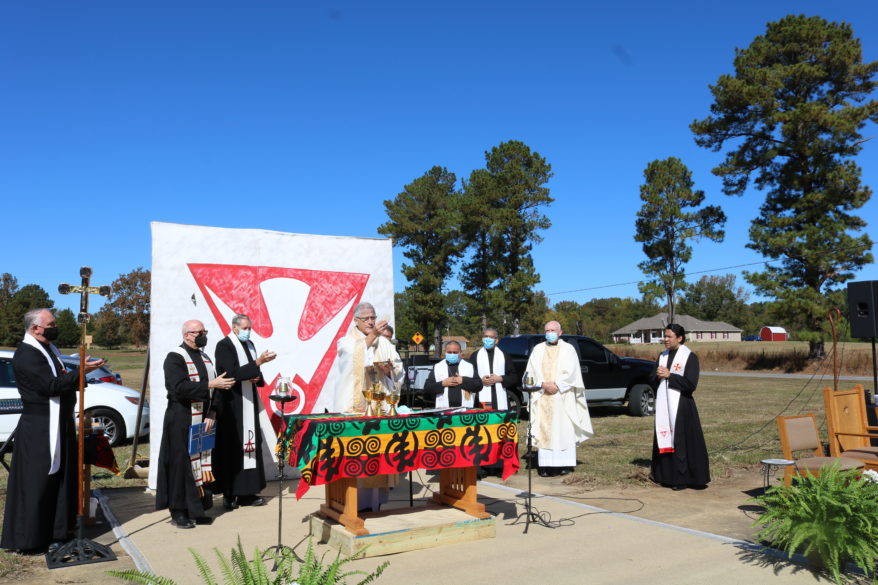
The apostolic Spirit, that Father Judge envisioned 100 years ago makes “missionary disciples offer the fire of God to all. This celebration is the first day of 100 more years,” Bishop Kopacz concluded.
At the end of the Mass, Father Mike Barth gave recognition plaques for their contribution to the Trinitarian Missions to representatives of Sacred Heart Camden, Holy Child Jesus Canton, St. Therese Kosciusko, St. Anne Carthage, Holy Rosary Indian Mission, Sister Mary Anne Poeschl, RSM and Bishop Kopacz. Father Barth also blessed the renovated cross in front of the Sacred Heart Camden Church; and Father Guy Wilson, ST created a ceramic necklace in memory of the centennial celebration for each attendee.
Foundation of the Trinitarians
It only takes a tiny spark from the Holy Spirit to ignite a fire that grows into something magnificent. And for the Trinitarians that spark grew into an institution that has helped millions of people over a 100-year period.
In this case, the Holy spark came in 1909 from six female volunteers in Brooklyn, who met with Father Thomas Judge to discuss their interest in assisting Catholic immigrants. They began an outreach program to visit homes and offer what help they could. This was the beginning of the Missionary Cenacle Apostolate (lay missionaries).
Father Judge, a son of Irish immigrants, arrived in Opelika, Alabama, an area with very few Catholics, in 1920. He then began forming lay groups or “cenacles.”
Due to their hard work and zeal for the salvation of souls, the Cenacle was then formally recognized by Bishop of Mobile, Edward Patrick Allen, in 1921.
Today, there are over 145 Missionary Servants of the Most Holy Trinity in missions around the world, most within the United States.
Trinitarian history reaches back 77 years in Mississippi
History books recall that Trinitarians first came to Mississippi in 1944, represented by Father Andrew Lawrence, ST, taking responsibility of Immaculate Conception, and at that moment, its missions: Sacred Heart on Sulphur Springs Road near Camden and St. Anne in Carthage.
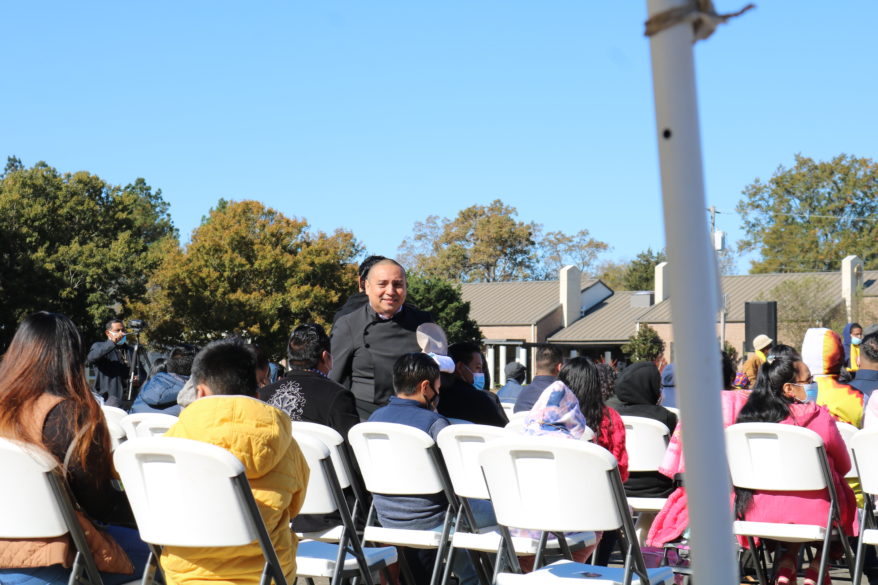
With the direction of Bishop R. O. Gerow, Father Lawrence started looking for a place to first build a church, then schools to follow, to improve the lives of local African Americans – this led to a place named Sulpher Springs.
According to Cleta Ellington’s 1989 book, Christ: The Living Water, Sulphur Springs was an extension of land that no one knew where it started, nor where it ended. But there was a Catholic church there, its roof collapsing under snow in 1923, and then rebuilt in Camden with the name of Immaculate Conception of Sulphur Springs around 1927, which then became the first church where Father Lawrence and the Trinitarians began their missions in Mississippi in 1944.
After the church, Father Lawrence and the Trinitarians founded the Sacred Heart Agricultural School in Sulphur Springs for African American youths. The school enrolled over 140 students at one point and was highly praised by the Mississippi Department of Education. Then sadly, the school was destroyed by fire and burned down in 1954.
In her book, Ellington also highlighted the struggles of the Trinitarians creating the Holy Child Jesus’ school in Canton, and how a little, non-Catholic Black girl named Bertha Bowman came to enroll in this school. Of course, this little girl grew up and became the first black Franciscan Sister of Perpetual Adoration – Servant of God, Sister Thea Bowman.
In another amazing turn of the history of Missionary Servants of the Most Holy Trinity in Mississippi, the small spark from the Holy Spirit back in 1909 ended up touching the Choctaw Reservation in Philadelphia beginning back in 1944.
From 1975 to 1990 and again from 2006 to the present, Father Robert “Bob” Goodyear, ST has served at the Holy Rosary Indian Mission in Philadelphia. Each Sunday he drives nearly 90 miles to three parishes to celebrate Mass for the Choctaw community. Recently, the work of Father Goodyear was highlighted nationwide when he was recognized as a finalist for the Catholic Extension Lumen Christi award.
In 2019, two Trinitarian priests were at the center of the aftermath of a massive raid against immigrants in Mississippi, Father Odel Medina, of St. Anne Carthage, was one of them. The support they received from volunteers and the whole community, along with their leadership hit the standards set by Fathers Judge and Lawrence years ago.
After almost 10 years in Mississippi, Father Odel has witnessed the growth of the Hispanic community in the state. He views the growth as fruits of the legacy of the Trinitarian founders, ”preserving the faith among immigrants.”
“Father Judge started with mainly the Italian immigrants, here in Mississippi. Hispanic immigrants [are] a new phenomenon and numbers are increasing … The future is going to a pluricultural church,” he said.
“This centenary is a jubilee,” said Father Odel. “I have been walking with all my parishioners, in good and bad times, but mainly with the most vulnerable, it has been a blessing for me.”
In one hundred years, the Trinitarians have accomplished more than just building schools and church buildings, they have touched millions of people from all different backgrounds, races and creeds.
(Joanna Puddister King contributed to this article.)

